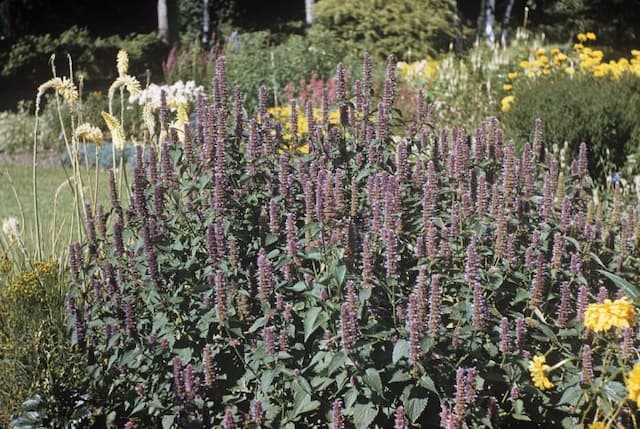Andean silver-leaf sage Salvia discolor

ABOUT
The plant known as Andean sage has striking visual characteristics that make it quite distinctive. The foliage of this plant presents an alluring contrast with its front side showing a green hue, while the underside is a rich purple or nearly black color. The leaves themselves are slightly wrinkled with a velvety texture, which only adds to the plant’s overall appeal. The stems are also similarly colored with the dark purple undertones, complementing the leaves and providing a cohesive look. Adding to its striking appearance, Andean sage produces flowers that are intensely colored; the blooms are a deep, inky purple to black hue and are nestled in showy green calyces. They grow in whorls, rising above the foliage and attracting attention with their unique color. This dark floral hue is quite rare and prized in plant collections for its dramatic contrast against the lighter colors typically found in gardens. The overall aesthetic of the Andean sage is one of moody hues and intriguing textures, creating a focal point wherever it is planted.
About this plant
 Names
NamesFamily
Lamiaceae
Synonyms
Andean Sage, Peruvian Sage, South American Sage
Common names
Salvia discolor.
 Toxicity
ToxicityTo humans
Andean sage (Salvia discolor) is not widely recognized for significant toxicity to humans. However, as with many plants, reactions can be individual and it is generally not recommended to ingest parts of ornamental plants like Andean sage due to the potential for mild stomach upset or allergic reactions. If accidental ingestion does occur and symptoms manifest, it is prudent to consult a healthcare provider.
To pets
Andean sage (Salvia discolor) is not commonly listed as a toxic plant to pets, such as dogs and cats. However, similar to humans, ingestion could potentially cause mild gastrointestinal upset. If your pet shows symptoms such as vomiting or diarrhea after ingesting this plant, please consult a veterinarian. Always err on the side of caution and prevent pets from ingesting plants that are not specifically known to be safe.
 Characteristics
CharacteristicsLife cycle
Perennials
Foliage type
Evergreen
Color of leaves
Green
Flower color
Black
Height
2 feet (0.61 meters)
Spread
2 feet (0.61 meters)
Plant type
Shrub
Hardiness zones
8
Native area
Peru
Benefits
 General Benefits
General Benefits- Aesthetic Appeal - Salvia discolor, commonly known as Andean sage, adds visual interest to gardens with its unique dark purple-to-black flowers and contrasting silvery-green foliage.
- Attracts Pollinators - The nectar-rich flowers are attractive to bees, butterflies, and hummingbirds, supporting local ecosystems.
- Drought Tolerance - Andean sage is known for its ability to withstand periods of drought once established, making it suitable for xeriscaping and water-wise gardening.
- Aromatic Foliage - The plant exudes a pleasant aroma from its leaves, which can add a sensory dimension to gardens and outdoor spaces.
- Culinary Use - Although not commonly used in cooking, some Salvia species are edible and can be used for adding flavor to dishes.
- Low Maintenance - Andean sage generally requires minimal care, being resistant to most pests and diseases, and thus making it an ideal choice for beginner gardeners.
- Cultural Significance - Salvia plants often hold cultural importance and are sometimes used in traditional ceremonies or as ornamental plants with symbolic meanings.
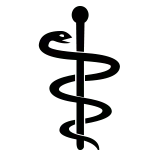 Medical Properties
Medical PropertiesThis plant is not used for medical purposes.
 Air-purifying Qualities
Air-purifying QualitiesThis plant is not specifically known for air purifying qualities.
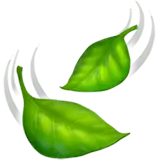 Other Uses
Other Uses- Ornamental: Salvia discolor, also known as Andean sage, is used as an ornamental plant in gardens due to its unique dark purple-black flowers and contrasting white hairs.
- Culinary Accent: The striking flowers of the Andean sage can be used as a decorative garnish for salads and desserts.
- Perfumery: The leaves of Andean sage can sometimes be used to create a subtle scent for perfumes, given their aromatic properties.
- Natural Dye: The deep pigmentation of Andean sage flowers may be used as a natural dye for fabrics or in crafting inks.
- Insect Deterrent: Andean sage can be planted in gardens as a companion plant to deter certain insects due to its strong scent.
- Floral Arrangements: Fresh or dried, the distinctive flowers of Andean sage make a dramatic addition to floral bouquets and arrangements.
- Photography Prop: The unique appearance of the Andean sage makes it an interesting subject for botanical and garden photography.
- Potpourri Ingredient: Dried leaves and flowers of Andean sage can be included in potpourri mixes for a pleasant aroma.
- Creative Crafts: The stems and flowers can be used in various creative craft projects, like pressed flower art or natural jewelry.
- Educational Use: Andean sage can be utilized in botanical studies and educational gardens due to its unique flowering and foliage.
Interesting Facts
 Feng Shui
Feng ShuiAndean sage is not used in Feng Shui practice.
 Zodiac Sign Compitability
Zodiac Sign CompitabilityAndean sage is not used in astrology practice.
 Plant Symbolism
Plant Symbolism- Immortality: Salvia discolor, also known as Andean sage, is often associated with immortality due to the long-lasting nature of its flowers.
- Wisdom: Sages, including the Andean sage, have been connected with wisdom, as their Latin name 'Salvia' originates from 'salvere', meaning 'to save' or 'to heal', alluding to the plant's healing properties and the wisdom required in its use.
- Protection: Andean sage is believed to offer protection against evil and negativity due to its potent aromatic properties that were traditionally thought to cleanse and purify.
- Spirituality: The plant's striking appearance often inspires a connection to spirituality, with some believing it can aid in spiritual journeys or enlightenment.
 Water
WaterThe Andean sage, also known as Salvia discolor, requires watering that ensures the soil is consistently moist but not waterlogged. During its growing season, typically, water the plant with approximately 16 to 24 onzes of water once a week, making sure that the topsoil feels dry to the touch before adding more water. In the winter months, reduce watering to every other week, ensuring that the soil does not completely dry out. Avoid overhead watering to prevent issues with mildew, instead aiming your water at the base of the plant to keep the leaves dry.
 Light
LightAndean sage thrives in full sun to partial shade conditions. The ideal spot for the plant is where it can receive a minimum of six hours of sunlight daily, which will encourage better blooming and healthy foliage. Avoid placing it in deep shade, as this will result in leggy growth and fewer flowers.
 Temperature
TemperatureThe Andean sage prefers temperate climates and is best suited to temperatures ranging from 50 to 80 degrees Fahrenheit. It can survive minimum temperatures down to about 40 degrees Fahrenheit and should be protected from frost. The ideal temperature conditions for maintaining a healthy Andean sage are between 60 and 70 degrees Fahrenheit.
 Pruning
PruningPruning the Andean sage is essential for maintaining its shape and promoting vigorous growth. Prune lightly in the spring and more aggressively after the main bloom period in late summer to encourage a second bloom. Remove any dead or diseased stems whenever noticed, and cut back the plant by one-third to half its size to keep it bushy.
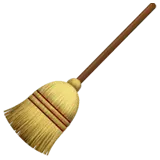 Cleaning
CleaningAs needed
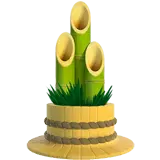 Soil
SoilAndean Sage prefers well-draining soil with added organic matter. A mix of equal parts loam, perlite, and compost is ideal. Maintain soil pH between 6.1 and 7.8 for optimal growth.
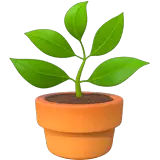 Repotting
RepottingAndean Sage should be repotted every 1-2 years to replenish soil nutrients and prevent root bounding. Choose a pot slightly larger than the current one.
 Humidity & Misting
Humidity & MistingAndean Sage thrives in moderate to high humidity levels but is adaptable. Aim for about 40-50% humidity for best results.
 Suitable locations
Suitable locationsIndoor
Place Andean Sage in bright light and avoid overwatering.
Outdoor
Plant Andean Sage in sun to part shade and well-draining soil.
Hardiness zone
8-10 USDA
 Life cycle
Life cycleThe life cycle of Salvia discolor, commonly known as Andean Sage, begins with seed germination, which requires well-drained soil and exposure to light; the seeds are sown on the surface, as they need light to germinate. Seedlings emerge and grow into juvenile plants, developing distinctive silvery-green foliage and a strong stem structure. As the plant matures, it enters the vegetative stage, where it grows its characteristic aromatic leaves and begins to form the infrastructure for its blooms. The reproductive stage follows, where purple-black flowers, rare among Salvias, emerge from bracts, usually in the summer or early autumn. These flowers attract pollinators, such as bees and hummingbirds, which facilitate cross-pollination. After pollination and flower wilting, the plant sets seed, completing its life cycle, and under suitable conditions, these seeds then disperse to give rise to new plants.
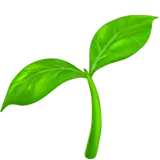 Propogation
PropogationPropogation time
Spring-Early Summer
The Andean sage, also known as Salvia discolor, is most commonly propagated via stem cuttings. This method is effective because it allows for the creation of a new plant that is genetically identical to the parent plant. To propagate Andean sage, healthy, non-flowering stems should be selected during the active growth period, which is typically the spring or early summer. The cuttings, about 4 to 6 inches (10-15 cm) in length, should have their lower leaves removed and the cut end can be dipped in rooting hormone to encourage root development. The cutting can then be planted in a well-draining soil mix and kept moist but not waterlogged. Covering the cutting with a plastic bag can create a humid environment that is beneficial for root growth. It generally takes a few weeks for the cutting to root adequately before it can be transplanted to a permanent location.
